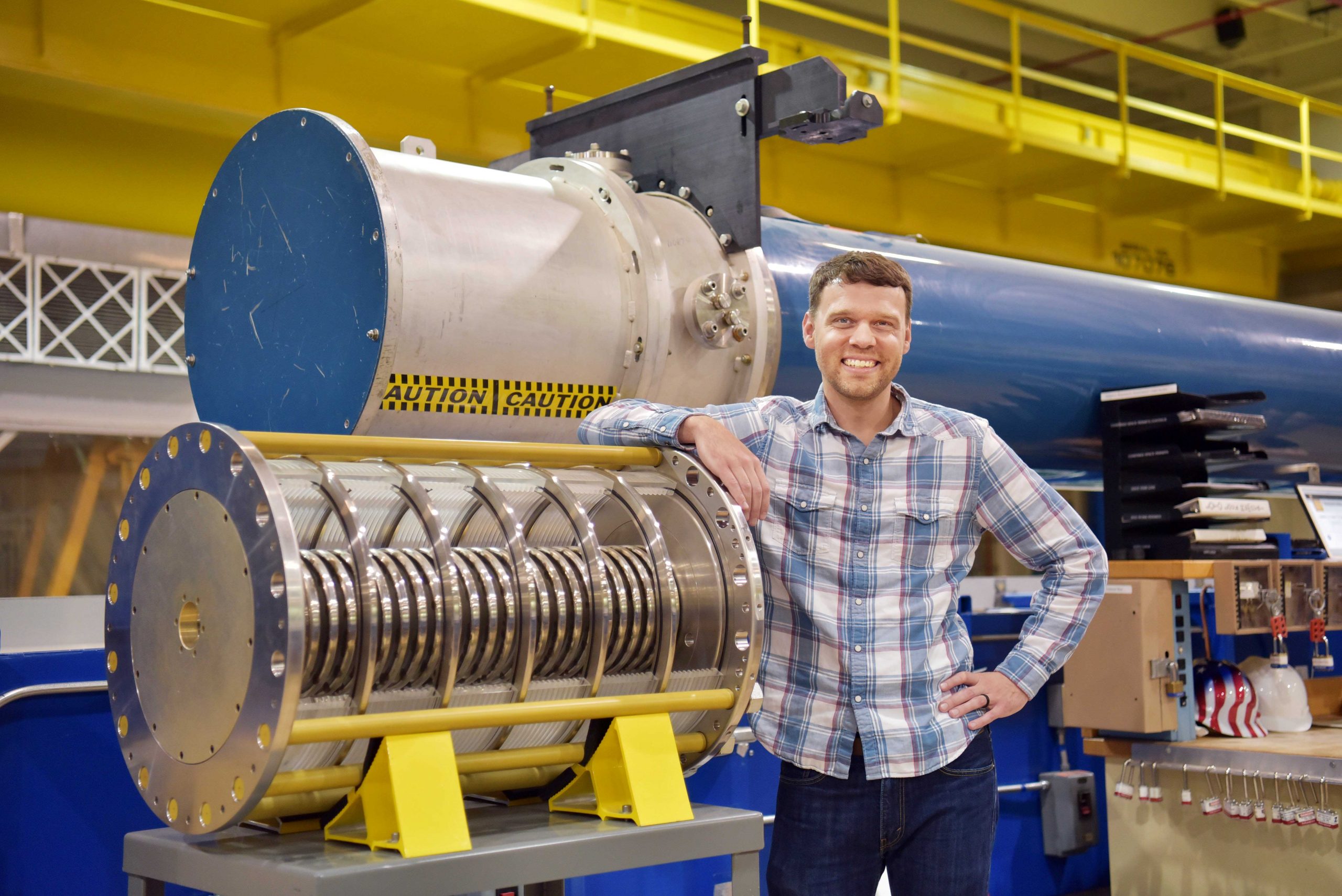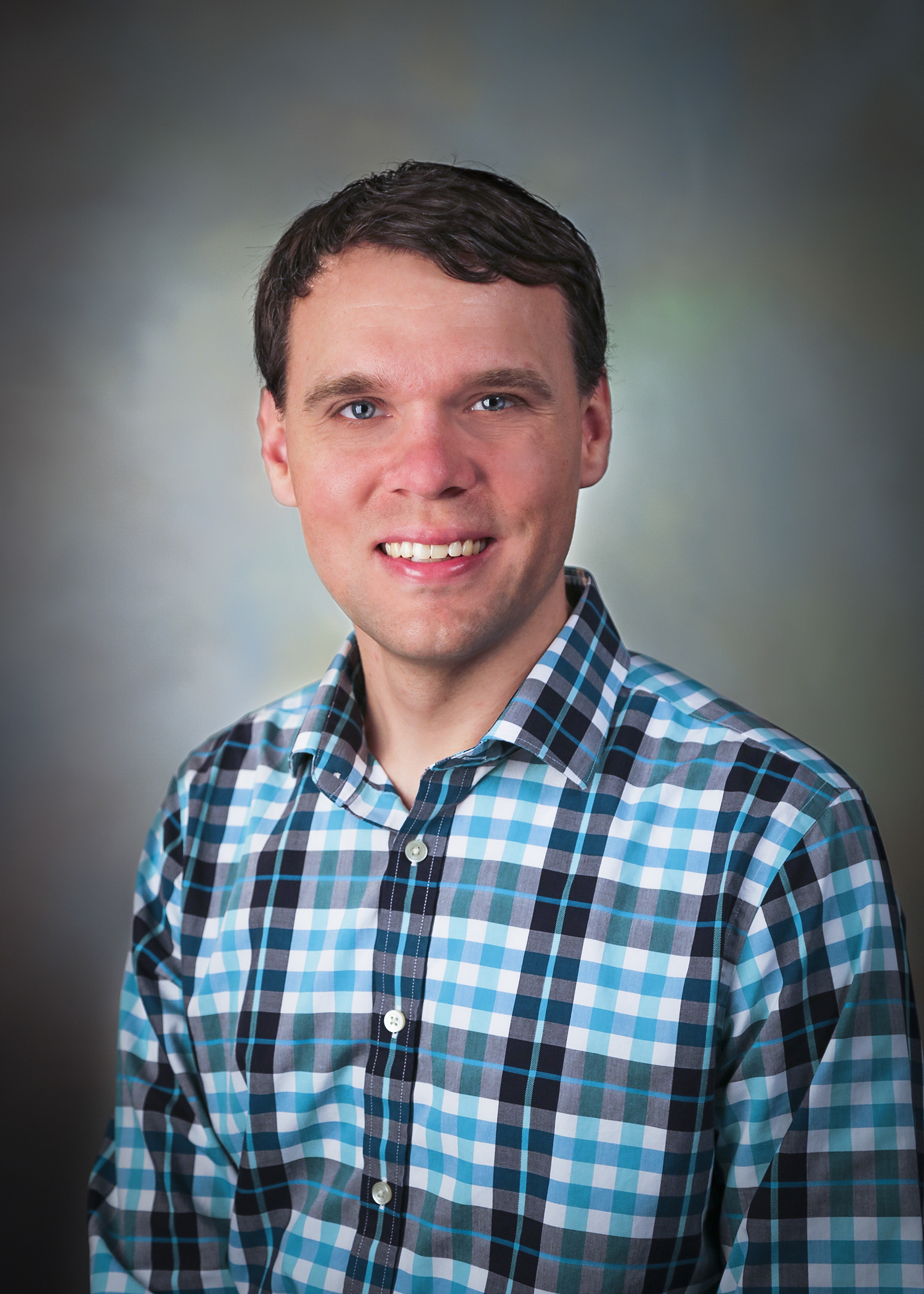ALBUQUERQUE, N.M.— A relatively new method to control nuclear fusion that combines a massive jolt of electricity with strong magnetic fields and a powerful laser beam has achieved its own record output of neutrons — a key standard by which fusion efforts are judged — at Sandia National Laboratories’ Z pulsed power facility, the most powerful producer of X-rays on Earth.

The achievement, from a project called MagLIF, for magnetized liner inertial fusion, was reported in a paper published Oct. 9 in the journal Physical Review Letters.
“The output in neutrons in the past two years increased by more than an order of magnitude,” said Sandia physicist and lead investigator Matt Gomez. “We’re not only pleased that the improvements we implemented led to this increase in output, but that the increase was accurately predicted by theory.”
MagLIF neutron production increased to 10 to the 13th using deuterium fuel (10 to the 15th would represent the hundred-fold output increase generally accepted by scientists, if an equal mixture of deuterium and tritium, DT, had been used) and the average ion temperature doubled. This was achieved through a simultaneous 50 percent increase in the applied magnetic field, a tripling of laser energy and an increase in Z’s power input from 16 to 20 mega-amps, Gomez said.
“The output was only 2 kilojoules DT, a relatively small amount of energy,” he said. A kilojoule is defined as the heat energy dissipated by a current of 1,000 amperes passing through a 1-ohm resistor for one second. “But based on the experiments that we have done so far, which show a factor of 30 improvement in five years and simulations consistent with those experiments, we think that a 30 to 50 kilojoule yield is possible, bringing us near the state known as scientific break-even.”

The rise in output, predicted from changes in input, indicates that a proposal to build a machine even larger than Z and better equipped to exceed break-even, now has a stronger basis from which to make that request, said Gomez.
“Results at MagLIF have stirred a tremendous interest in fusion research that —by combining magnetism, lasers and electrical energy — spans the plasma states between traditional inertial confinement fusion, like the lasers at Lawrence Livermore National Lab’s National Ignition Facility, and traditional magnetic confinement fusion like the international ITER project in southern France,” said Dan Sinars, director of Sandia’s Pulsed Power Sciences Center. “MagLIF’s success has led to new programs and several fusion start-ups, and has helped build interest in this broader approach.”
Because performance and plasma conditions varied predictably with changes in input parameters, Sandia fusion experiments manager David Ampleford said, “We have additional confidence we can scale MagLIF to higher currents.”
Break-even is the intermediate goal
Break-even occurs when the amount of energy invested in the fuel is equal to the amount of energy it emits, a milepost achievement to those in the field. When more energy is emitted than is needed to maintain the experiment — a condition known as “high yield” — the world’s dream of clean energy from seawater, the most accessible material on Earth, will take a giant step forward.
Seawater contains a variant of hydrogen called deuterium, which contains an extra neutron, and tritium, which has two extra neutrons. These extra neutrons are fusable, which means they release fusion energy when they can combine. Deuterium, easier to work with, is the current material of choice in almost every fusion experiment at Z, with tritium’s more energetic presence sometimes simulated.
Even prior to reaching break-even, the work is useful: Data from increasingly powerful fusion reactions fed into supercomputers informs Sandia’s stockpile stewardship work that ensures the nation’s nuclear weapons are safe, secure and reliable.
The story of MagLIF begins with a theory
The theory behind Sandia’s MagLIF fusion method was originated a decade ago at Sandia by a team led by theoretical physicist Steve Slutz. The method combines a massive electrical pulse from Z with a laser burst that pre-heats a sometimes-icy pencil-eraser-sized deuterium target, bringing it closer to an appropriate starting temperature from which to climb to fusion. The method then employs a magnetic field to keep charged particles within the cylindrical operational area so they fuse in greater numbers. Then, still informed by theory, came a wave of improvements, most recently led by Gomez’s Sandia team.
The team decreased the thickness of a clear plastic window that restrained the room-temperature fusion gas but also partially obscured an entry port for the laser beam.
Initially, the team conservatively chose a very thick window to ensure that it would not burst prior to the experiment and ruin the target, Gomez said. Subsequently, the team rigorously tested window materials in a variety of thicknesses to identify the pressure at which each would fail.
“We determined that we could roughly halve the thickness and still robustly contain the fusion fuel,” Gomez said.
The little window that disappeared
The fuel preserved, the researchers turned to computer simulations that showed how much improvement could be expected in the energy coupling of the laser beam with the target, given that the window thickness had been decreased.
“The laser doesn’t pass through the window in the way we might traditionally think it would,” Gomez said. “The laser is so intense that it actually ionizes the window, converting it into a plasma, heating it up until it becomes more or less transparent to the laser. The process of heating the window to these extreme temperatures accounts for a decent fraction of the laser energy lost. We removed about half the of the window material mass, so we don’t need to heat as much up, so we lose less energy.
“Our simulations were subsequently confirmed with experiments,” Gomez said.
Sandia also increased the power of the magnetic fields that restrained charged particles from leaving the playing field, making it more likely they would stay to interact and fuse.
Another problem overcome was how to increase the strength of two magnetic coils while maintaining a window between them for diagnostic access, Gomez said. “Previously, we needed to decide between a larger magnetic field without diagnostic access, which we were reluctant to even try, and a smaller magnetic field with diagnostic access,” Gomez said. “We now have the larger field and the diagnostic access, which we achieved through internal reinforcement of the coils.”
The stability of the reactions remains an issue as powerful operating forces increase. The fusion implosion, rocked by increased input, can spin out into nothingness. But simulations show that higher pressure in the fuel area should act to stabilize against increased incoming forces.
“Break-even is still two orders of magnitude away, but simulations that capture our experimental trends indicate another order of magnitude increase in yield is possible with additional increases of input parameters,” Gomez said.
He mentions more fuel, more powerful laser bursts, magnetic fields and electrical pulses as controllable contributing factors leading to higher outputs he considers inevitable.
This work was supported by the Presidential Early Career Award for Scientists and Engineers and the National Nuclear Security Administration.